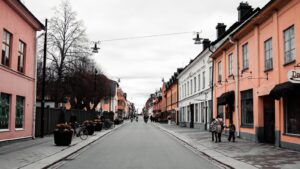The European Environment Agency’s (EEA) have this week updated their European city air quality statistics, revealing that Uppsala in Sweden enjoys the cleanest city air in Europe, based on average concentration levels of PM2.5 over the past two calendar years.
The agency use the two year measuring period because it is exposure to air pollution over the long-term that causes the most serious health effects.

Uppsala in Sweden, where you’ll find the cleanest urban air in Europe
The average PM2.5 levels in Uppsala was 3.5μb/m³, within the World Health Organization (WHO) recommended maximum level of 5μb/m³.
In close second place in the EEA’s ranking of 372 cities in the European Union were Umeå, also in Sweden, and Faro in Portugal, both of which averaged 3.6μb/m³.
The EEA focus on urban areas as three out of four Europeans live in towns and cities, with most of them being exposed to unsafe levels of air pollution.
The data for the table was collected from over 500 monitoring stations at urban locations across EEA member countries during 2022 and 2023.
Only 12 cities had average PM2.5 concentrations inside the WHO guidelines, four of which were in Sweden, one in Iceland, three in Finland, two in Estonia and two in Portugal (one of those being on Madiera).
At the opposite end of the scale, 17 cities registered PM2.5 levels over 20μb/m³, Nine of these were in Italy and three in Poland but the worst ranked city is Slavonski Brod in Croatia, where the population of 52,000 people suffer average levels of 26.5μb/m³.
Later this year, the EEA will publish an analysis on the impacts of air pollution on ecosystems and human health. This includes estimates on deaths and ill health that can be attributed to poor air quality.


















Leave a Reply